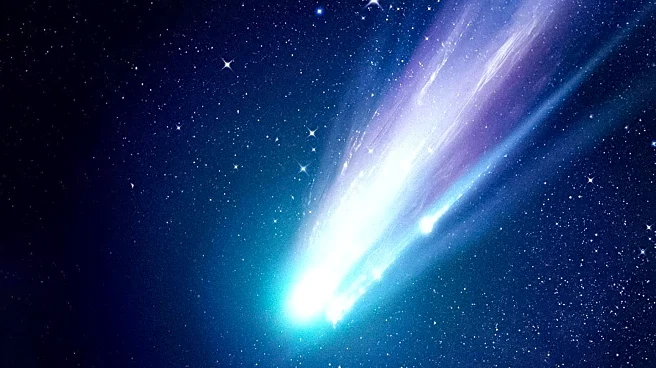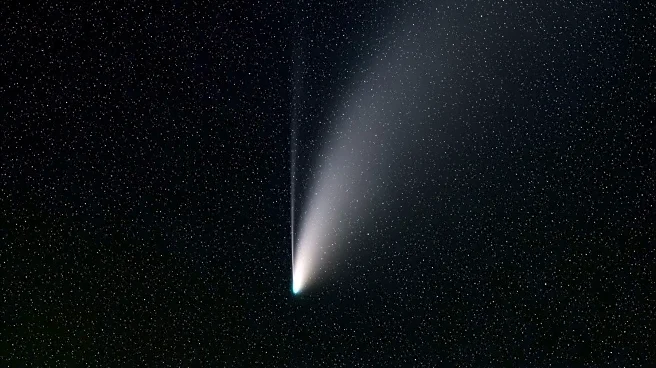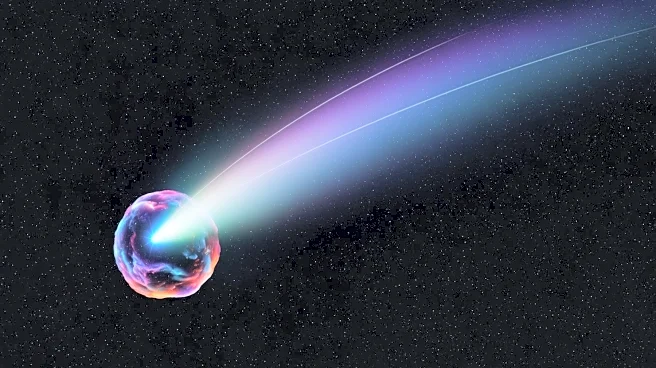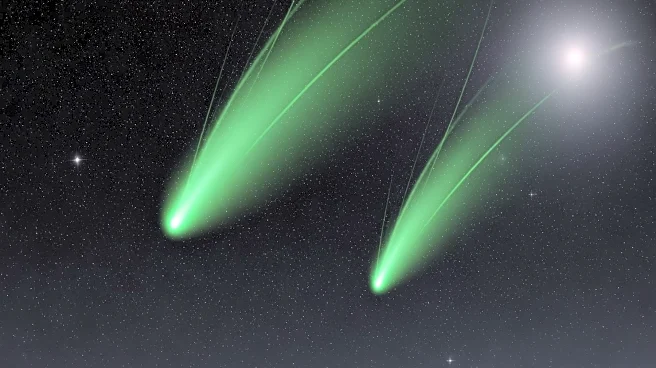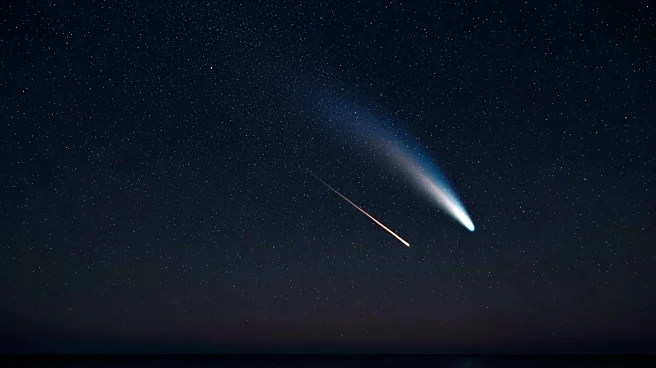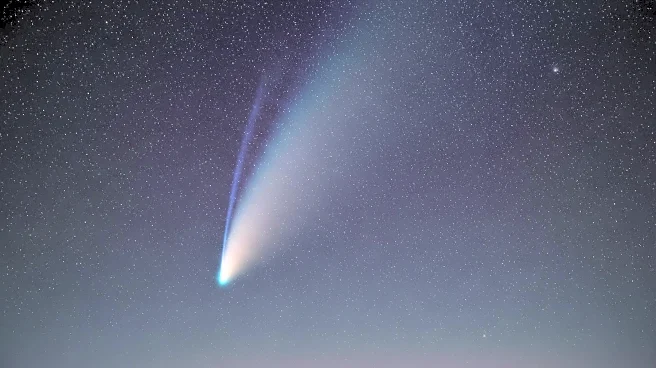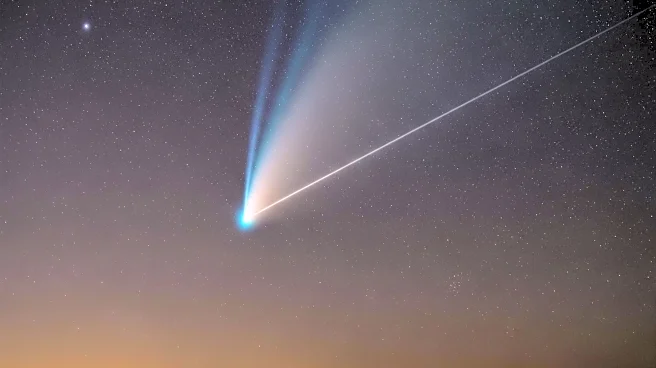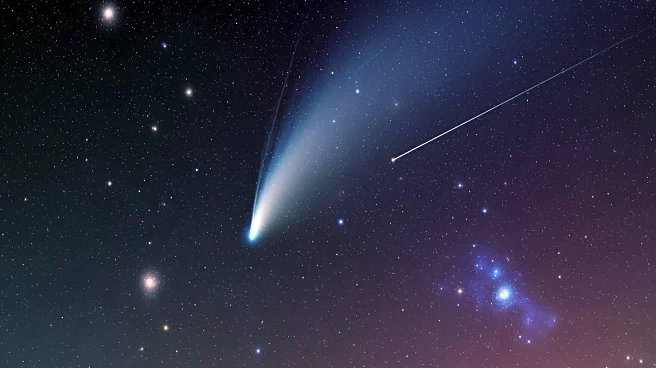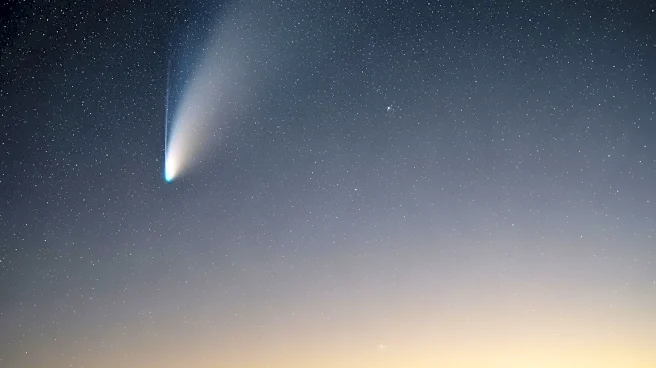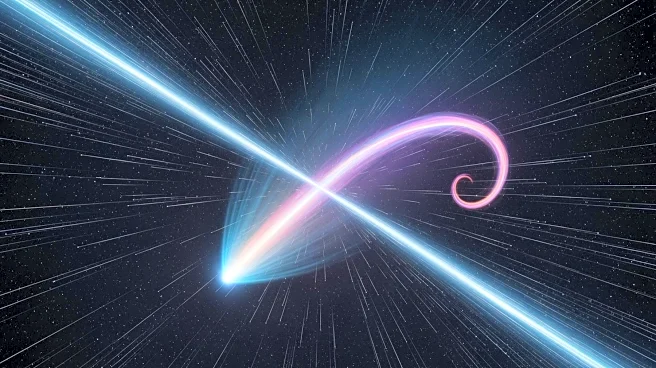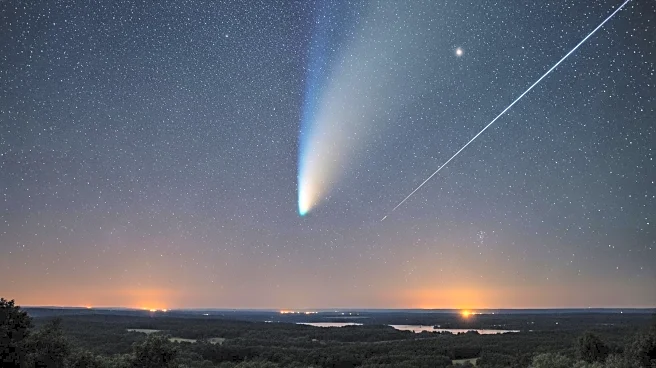What's Happening?
Comet C/2025 R2 (SWAN), discovered by Ukrainian amateur astronomer Vladimir Bezugly, is brightening as it approaches Earth. The comet made its closest approach to the sun on September 12 and is expected
to be visible to the naked eye around October 21. As the comet nears the sun, sublimation causes its frozen materials to vaporize, creating a tail that reflects sunlight. Currently, the comet's brightness is measured at magnitude 5.6, making it potentially visible under dark skies. Observers can find the comet in the evening sky, moving through constellations such as Serpens and Sagittarius.
Why It's Important?
The appearance of Comet C/2025 R2 (SWAN) provides a rare opportunity for stargazers to witness a celestial event that may be visible without telescopic aid. The comet's brightening enhances public interest in astronomy and encourages people to engage with the night sky. This event also highlights the dynamic nature of comets and their interactions with solar radiation, offering insights into the composition and behavior of these ancient celestial bodies. The potential visibility of the comet underscores the importance of timing and environmental conditions in astronomical observations.
What's Next?
As Comet C/2025 R2 (SWAN) continues its journey, observers are advised to use binoculars or telescopes for better viewing. The comet will be visible throughout October, with its closest approach to Earth on October 21. Stargazers are encouraged to find dark locations with minimal light pollution to enhance their viewing experience. The event may inspire further interest in upcoming celestial phenomena, fostering a greater appreciation for the wonders of the universe.
Beyond the Headlines
The brightening of Comet C/2025 R2 (SWAN) underscores the unpredictable nature of cometary activity and the factors influencing their visibility. This event serves as a reminder of the ongoing interactions between celestial bodies and the sun, offering insights into the processes that shape our solar system. The comet's appearance also highlights the role of amateur astronomers in discovering and tracking celestial phenomena, contributing to the broader scientific community.
